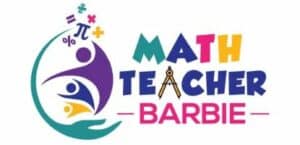This post contains affiliate links. If you purchase through these links, I may earn a small commission at no additional cost to you. You can read more about how I choose affiliates and products at my affiliate page.
This post was originally published on mathteacherbarbie.com. If you are reading this elsewhere, you are reading a stolen version.
Overview
Once Upon a Dime: A Math Adventure uses a magical tree to introduce children to relative values of various US coins, with a brief international (yuen) coin reference. In addition to coin values, it explores some of the characteristics of the various coins, such as pennies that “glinted copper in the sunshine,” dimes that “pinged and tinged… making the tree sound like wind chimes,” and “heavy” quarters that make “a sound like tiny cowbells.”
The story occurs in the context of a small, organic farm raising a variety of crops and animals. While this may be a familiar context for some students, many students being introduced to these coins in middle elementary have limited, if any, knowledge of this broader context. Even those familiar with farming concepts may be steeped in other types of farming with different styles of inputs.

The farmer and his youth helper discover a volunteer tree on the land and determine to fertilize and encourage the tree to grow. They fertilize first with chicken droppings, after which the tree grows and produces a crop of pennies. Then each year they experiment with the outputs of different animals. Each year, as the animals increase in size, the tree’s crop relates to the implied nutritive content of the animal whose fertilizer is used. In addition, the farmer is a fan of using puns on individuals from US History to name his animals, so we encounter Grover Cleveland and Franklin D. Roostervelt, among others.
The journey follows the youth farm helper learning about the relative values of each coin as well as the process of experimenting when left in charge while the farmer is on his honeymoon using the yuen the tree grew one year. It ends with a commentary on the value of money versus the value of the sensory enjoyment of the beautiful sounds made by the dimes.
How to Read/Use
I have found this book difficult to use. Unlike many other books from this publisher on similar topics, it has almost always failed to capture the imaginations of children in my experience. I believe this is in large part due to an assumption of background knowledge the children simply don’t have despite the variety and extent of small multi-crop farming, permaculture-style farming, as well as larger “modernized” farming activity here in the Pacific Northwest.
- Few children have much exposure to farms like Farmer Worth’s, with the diversity of farm products and the cycle of farm outputs becoming farm inputs.
- Similarly, few children have the concept of the dung of different animals having different nutritive values for fertilizing crops.
- The animal-name puns refer to figures in US history which are lesser-known to students in the mid-elementary age group for which these math topics and storybook style are most appropriate.
For students with whom I’ve shared this story, the most exciting part was at the end was when the tree started growing books from being fertilized by alphabet cereal.
These challenges individually can be overcome through introduction. If this book fits with a broader cross-curricular learning opportunity, it might be a great fit. However, I suspect this particular combination of topics would be rare without being built around the book itself.
Which may be what you want to do: build a cross-curricular unit including natural farming ideas for science, US history for social studies, and coin denominations for math, extended from the ideas in this book. Contextualizing a month of instruction the early 20th Century US could allow for this.
Author
Nancy Kelly Allen has published a variety of books for children and youth. Though I am not broadly familiar with her work, most are well-reviewed and seem well-received. On initial glance through the collection, she appears to be both a fan of name puns as well as anchor much of her work in white, rural, early-20th-Century US history contexts. In these, Once Upon a Dime is no exception.
Per her own site, her “route to writing children’s books is as winding as the mountain roads surrounding my home near Hazard, Kentucky” in the US. This route has included social work, teaching (primarily social studies), and library science.
The author’s website
Final Thoughts
If it is the right context for you and your children’s/student’s interests and curriculum, Once Upon a Dime: A Math Adventure could be a great fit . The story and the visuals could easily be engaging and educational with the right background experiences. The mathematics are relatively straightforward, accurate, and useful. It’s not the math that is heavy-handed in this story.
That said, I did find the nod to “other cultures” trite. When the tree was fertilized with “panda patties” from the zoo, it grew yuan, which Farmer Worth used to travel “on a slow boat to China” for his honeymoon. World history is complicated, and I would be wary of “whitewashing” that could happen if using this book as a primary basis of instruction without additional investigation and more diverse sources.
Once Upon a Dime: A Math Adventure comes in paperback and prebound hardback. If you’re looking for a book to tie together a variety of these ideas, or if you have the right mix of student experiences, look no further. However, I personally will keep looking for a book about US coin denominations that better captures my audiences’ imaginations.
